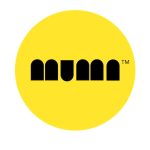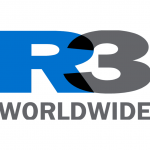
By: Elfrida Szeto
Last week, Montreal saw an influx of creatives, marketers, data scientists, innovators and more who came together for the 6th iteration of C2. C2 brings together 6,000 people from 60 countries and 20 industries to exchange ideas, to learn and be inspired. This year’s conference tagline of ‘Goodbye Cynicism, Hello New Ideas’ inspired, and there were several events and activities over the three days that followed the five themes of Talent, Marketing, Entertainment, Cities and Moonshots.
The Harvard Business Review called C2 “A conference like no other,” and it truly was overwhelming for this first-timer. Coming all the way from Singapore, I wanted to attend as many talks and panels as possible. Two memorable fireside chats were from Randi Zuckerberg (yes, Mark’s sister) and Steve Wozniak. Randi’s best advice was “do one thing that scares the shit out of you every year,” while Steve used his time to reveal his two formulas of happiness that involved food, fun and friends. Perhaps the most engaging event was the “Creative Leadership in a Dynamic Marketing Landscape” panel. The hour-long discussion covered the changing face of marketing and how creative leadership is an important element in the industry. Here are my top four takeaways.
Brand Purpose
In this age of corporate social responsibility and brands latching on to larger social movements, many are questioning if brands should just focus on their goods and services rather than “trying to save the world.” It is important to note that there has been a surge in a new breed of companies in which their business structure and business practice is their purpose. An example would be companies like Uber and Toms; there is no difference between how they run their business and their purpose. This model begins with internal talent, building inside out and recruiting people who can live the brand purpose – which would hopefully flow through to the consumer. This also needs to flow through to the brand’s partners, including agencies. They need to be able to tap into the same spirit and understand the brand. The most important aspects of a brand’s purpose are clarity and direction. Rather than just capitalising on every new social trend or movement, a brand truly needs a clear mission. Otherwise, it will be challenging to sincerely connect with consumers and find partners that can help to achieve brand goals.
Content
Another theme of the panel was the shift from traditional advertising to content/entertainment. The discussion centred around how not every brand can become a media organisation or an entertainment company. What it comes down to is whether consumers want advertising or content. The fact of the matter is that each brand is competing to have their voice heard – marketing needs to resonate, it needs to break through the noise. The answer to the entertainment vs. advertising question depends on what your consumers what. It is key to understand what people want from you as a company and how to deliver what they want. Entertainment can and does play a major role, but there has to have balance with brand message and core truth. It’s possible to see a great ad, but a half an hour later you’re not able to remember the brand. That is where marketers can lose their way — trying to entertain, but forgetting about sales. It is important that marketers and their agency partners remember that the bottom line is that content has to help drive sales; otherwise, it’s not serving the brand.
Data
Another area where there is often conflict is the balance between left brain and right brain thinking in marketing, or the importance of creativity vs. data/analytics and research. What is the right balance between being instinctive and creative and simply using data to develop communications? Marketing today has a unique opportunity to shape brand purpose, to shape the value proposition and create a consumer relationship through a set of experiences. It’s not just one ad, but how the advertising, marketing, messaging, social media and product experience all that work together. Data can help to shape this seamless customer experience. That’s the ideal relationship between creativity and data. Marketers need to embrace the partnership with IT and agencies who know how to use the data. Most companies are not ready for big data, and many marketers find it difficult to pull all the useful data together once they have it. Hiring digitally savvy agencies and internal talent can help to bridge that gap between traditional marketing and the digital transformation currently sweeping the industry.
Agency Partners
In this ecosystem with so many different kinds of partners, how do you cut through the noise and find the right ones? The answer is that it’s different for different companies. At the end of the day, it’s about the right fit for your specific business. Most agencies will say they can do it all, but the key is to figure out what the brand needs, rather than just “doing it all” for the sake of doing it. Agency relationships are comparable to personal relationships. Are you looking for a spouse, or just dating around? Do you need a long-term partner whose success will be closely tied to your own, or are you looking for a project specialist for a one-and-done type arrangement? These are the questions that internal marketing teams need to analyse before selecting partners, to make sure everyone is working together towards mutual success.
Elfrida Szeto is a Senior Consultant at R3.
BEST OF GLOBAL DIGITAL MARKETING Conference 2017
For the seventh year running, we are bringing back the famous Best of Global Digital Marketing Conference to KL with a special focus on Content Marketing this year. Unique case-study based learning, as our team monitors over 200 digital marketing award shows across the globe and interviews the winners. Based on this extensive work, we produce in-depth case studies.
Speakers with digital domain expertise:
• Hando Sinisalu, CEO of Best Marketing International
• Kyoko Yonezawa, Creative Technologist and member of Dentsu Lab Tokyo
• Scott Gray, Experience Director, Mirum South Africa
Global Case Studies include:
BANKING & INSURANCE: Compare The Market, Advocards, Allianz, Ally Bank, Barclays….
TECHNOLOGY & STARTUPS: Hubspot, Pipedrive, MoveHub….
AUTOMOTIVE: Volkswagen, Volvo, Nissan, etc FMCG: Ariel, Unilever, Snickers…
RETAIL: McDonald’s, Harvey Nichols, Zalando….
TRAVEL & TOURISM: Qatar Airways, Transavia, Finland Tourism, Sweden Tourism, KLM…
Each best practice case study is presented based on…
Business problem: What is the market situation? Who are the competitors? What is the target audience? What are the main business/marketing challenges? What are the goals?
Solutions: What are the consumer insights? What was the creative strategy? What was the media strategy? What were the resu
lts of the campaign?
Lessons: What other marketers from other countries/other business sectors could learn from this case study? What are the main mistakes to avoid?
The Best of Global Digital Marketing Conference has won popularity in more than 30 cities around the world from Singapore, Moscow, Jakarta, Istanbul to Amsterdam, Johannesburg, Prague, Shanghai, Seoul, etc.
Date: 14 August, 2017 (Thursday)
Venue: Sime Darby Convention Centre, Kuala Lumpur.
Time: 8.30am – 5.00pm
Book your seats early! Call Ruby on 03-77262588 or [email protected]
MARKETING Magazine is not responsible for the content of external sites.











